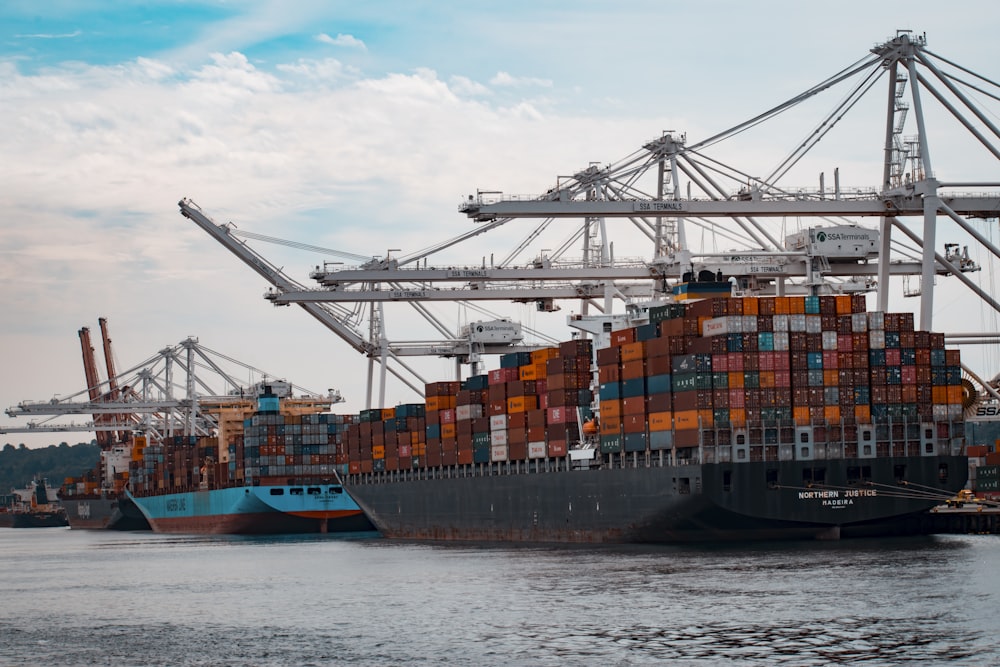A Look At Trump’s Tariff Plan
Image Source: Unsplash
The following is a summary of the Trump administration’s tariff strategy based on public interviews, with a special focus on Scott Bessent. Let’s take a look.
1. What’s the Big Idea?
At its core, Trump’s latest tariff plan is all about bringing industry back home. The goal? Rebuild American manufacturing, cut back on how much the U.S. relies on imports—especially from China—and try to undo what his team sees as decades of economic decline and a shrinking middle class.
He’s pulling inspiration from early American thinkers like Alexander Hamilton, mixing old-school protectionism with modern-day dealmaking. Tariffs aren’t just taxes in this plan—they’re also bargaining chips.
2. How It’s Supposed to Work
Global Tariffs Across the Board:
Instead of just going after a few countries, the plan calls for a blanket approach—tariffs on imports from everywhere. The rates would vary depending on things like trade deficits, currency manipulation, and whether a country is playing fair.
Leverage in Negotiations:
Trump wants companies—especially foreign ones—to think twice about where they set up shop. Build your factory in the U.S. and skip the tariffs. Set it up overseas, and you’ll pay the price.
Funding Without Raising Taxes:
One big selling point? The revenue. The administration says this could bring in somewhere between $300 billion and $600 billion a year. That money could help fund government programs without needing to hike taxes—potentially paving the way for middle-class tax cuts.
3. Why They Think It’s a Good Idea
Economic Inequality:
Team Trump argues globalization mostly helped wealthy elites in coastal cities, while hollowing out working-class towns in the middle of the country. The tariffs are meant to flip the script—shifting wealth and opportunity back to “Main Street” from “Wall Street.”
Security at Home:
COVID highlighted how fragile global supply chains can be. Trump’s plan focuses on bringing manufacturing of key goods—like pharmaceuticals, semiconductors, and shipbuilding—back to the U.S. as a matter of national security.
4. What About Prices?
Critics often say tariffs raise prices for consumers, but the administration sees it differently. They point to research showing that a 20% tariff only bumped up consumer prices by about 0.7%. The idea is that foreign currencies will adjust and producers will eat some of the costs, meaning the impact on American wallets stays low.
5. How the Markets Might React
There’s always some market turbulence with big policy shifts, but officials argue recent volatility—especially in tech stocks—has more to do with global competition in AI than with tariffs. Long-term, they believe that stable taxes, less red tape, and a stronger industrial base will keep markets healthy.
6. Global Ripple Effects
China:
The plan takes direct aim at China’s economic model—one they say is overly reliant on exports, government subsidies, and keeping labor costs low. Trump’s team doesn’t expect much retaliation, arguing that China’s economy is already struggling with things like deflation and slowing growth.
Europe:
Europe isn’t directly targeted, but it’s still in the crosshairs. The U.S. hopes European countries will rethink their dependence on cheap energy from Russia and manufacturing-heavy exports. These changes won’t be easy, but the administration sees them as inevitable.
7. Big Picture Goals
The endgame is to bring global manufacturing back to the U.S., which would eventually lower the need for tariffs altogether. It’s a long-term play—more jobs, better wages, and stronger economic growth at home, even if that means short-term bumps along the way. Think of it as a modern take on Reagan-era economic realignment.
8. Roadblocks & Risks
The plan doesn’t pretend everything will go smoothly. It acknowledges some big challenges—like how immigration, AI automation, and foreign backlash could complicate things. The administration says it’s all about managing risk carefully to avoid financial or geopolitical fallout.
9. The Politics of It All
This plan is clearly aimed at Trump’s base. It leans hard into the populist message of putting regular Americans first. It’s pitched as a way to protect working families by boosting wages, bringing back jobs, and easing the tax burden—all while standing up to global elites.
10. The Dollar & U.S. Credibility
Despite the disruption, the plan emphasizes keeping the U.S. dollar strong. The thinking is that solid economic fundamentals—like rising domestic output—will help maintain global confidence in the dollar.
What the Administration Hopes Will Happen:
- A manufacturing comeback in the U.S.
- More jobs and higher wages
- Stronger, more secure supply chains
- Less economic inequality
- Big federal revenue without higher taxes
What Could Go Wrong:
- Short-term market turbulence
- Trade spats with other countries
- Supply chain hiccups and price jumps during the transition
The Bottom Line:
Trump’s tariff plan isn’t just about taxes on imports—it’s a full-on shift in how the U.S. approaches trade, manufacturing, and economic power. It’s designed to shake up the status quo, challenge global trade norms, and bet big on reshoring as the path to long-term prosperity and strength.
More By This Author:
Palantir AIPCon 6: Key Highlights & Industry Impact
Beyond Nvidia: A New AI Investment Framework
Quick Thoughts On Amazon’s Chip Ambitions
Disclaimer: This text expresses the views of the author as of the date indicated and such views are subject to change without notice. The author has no duty or obligation to update the ...
more



